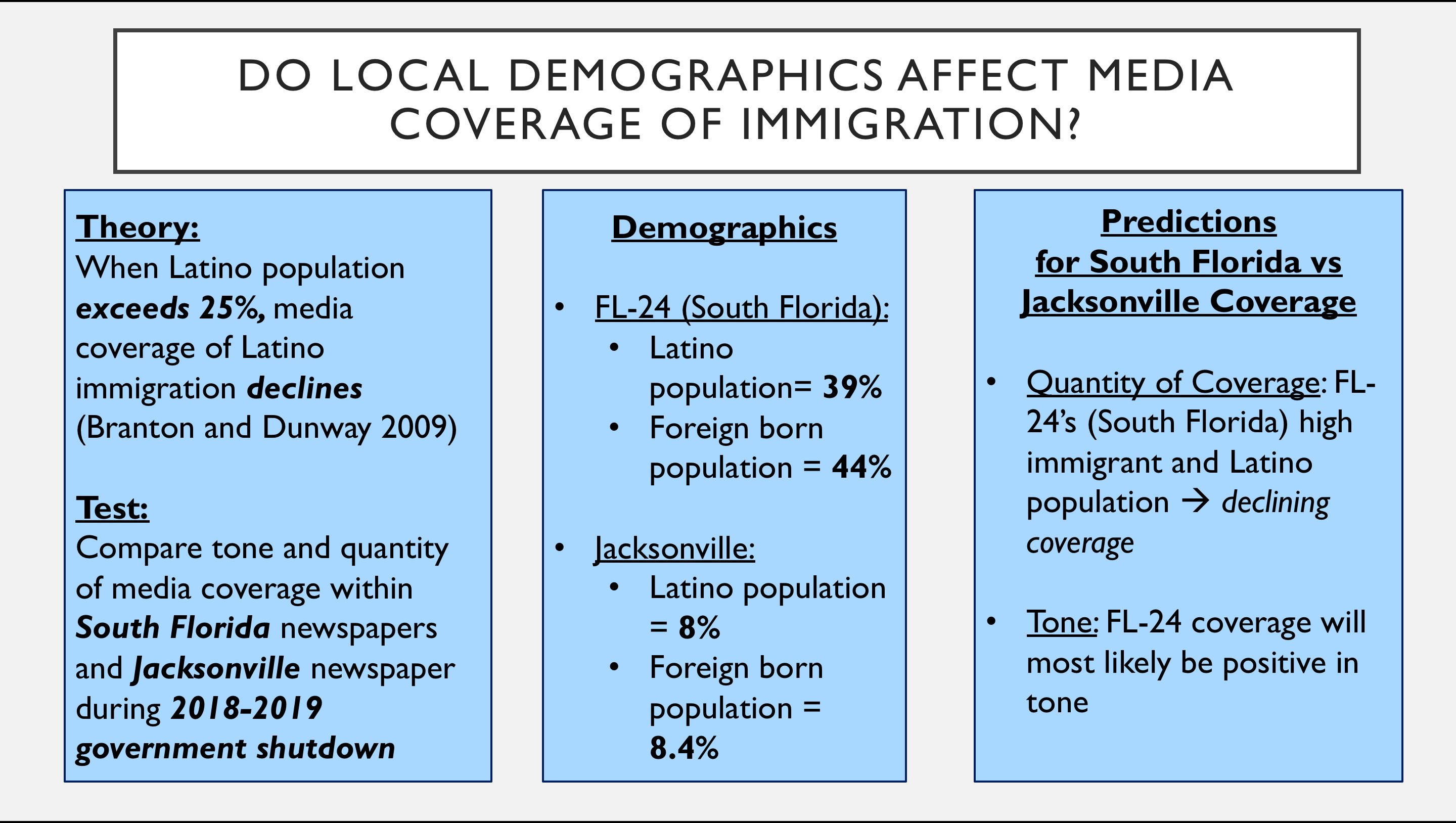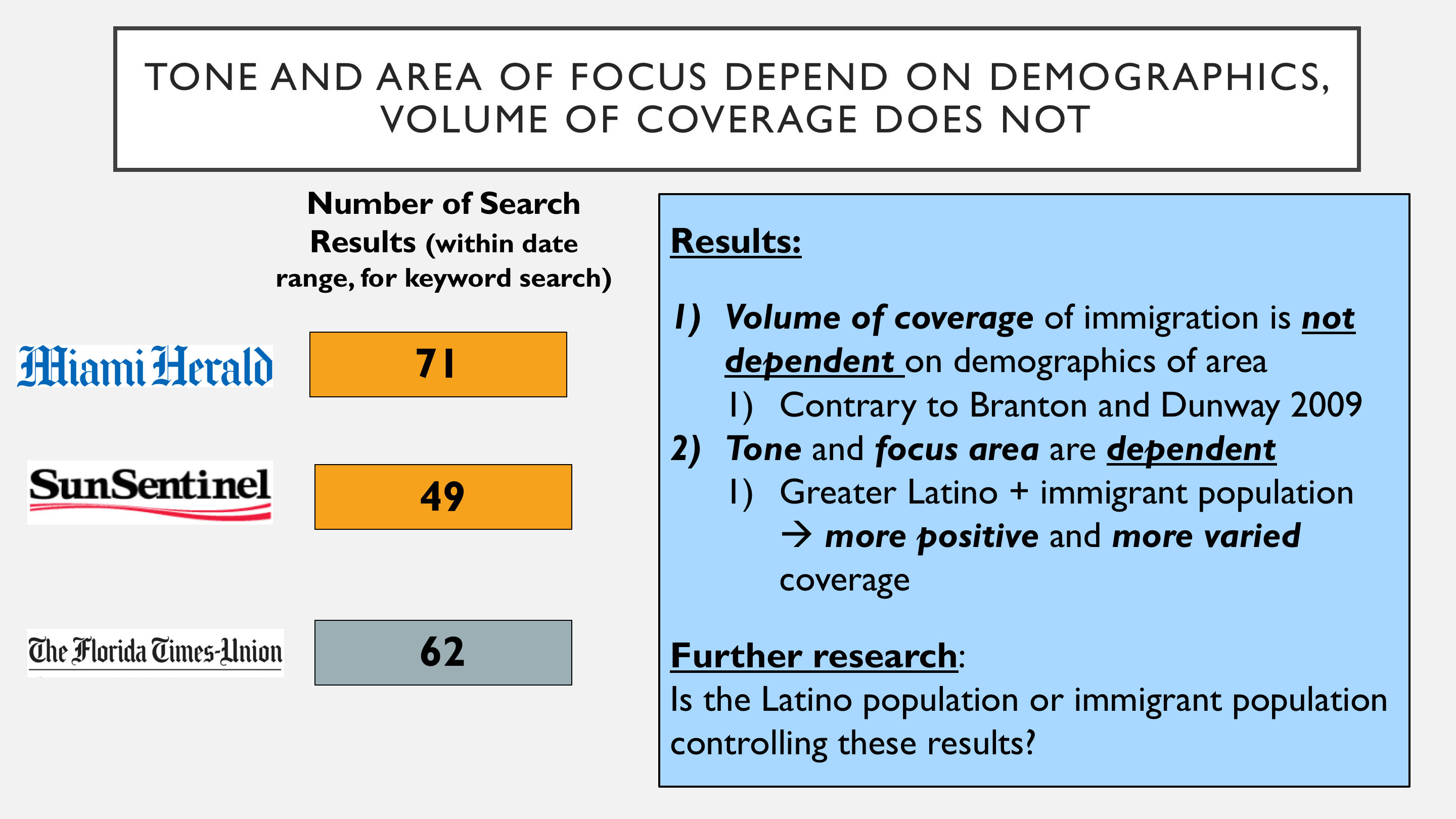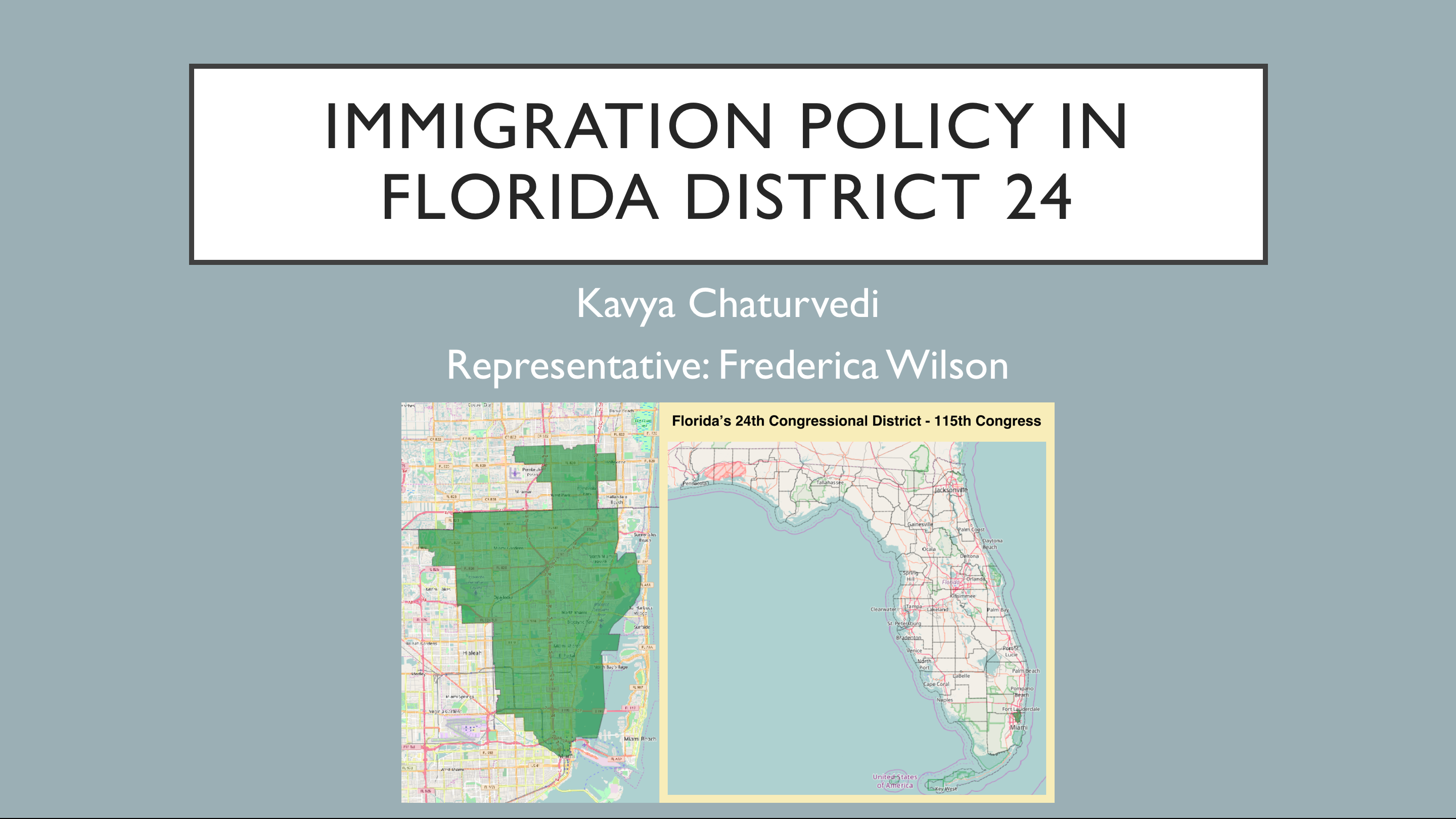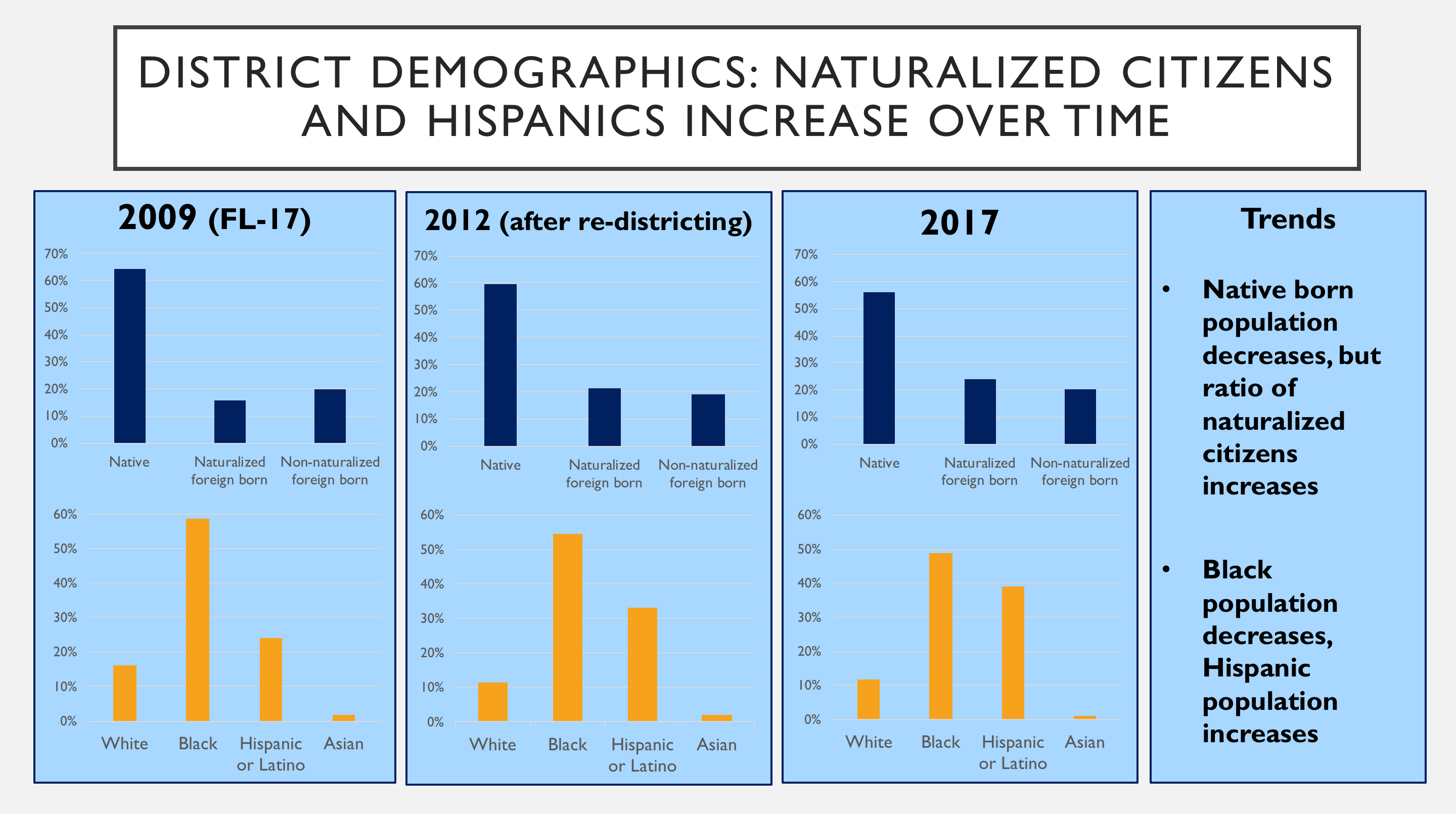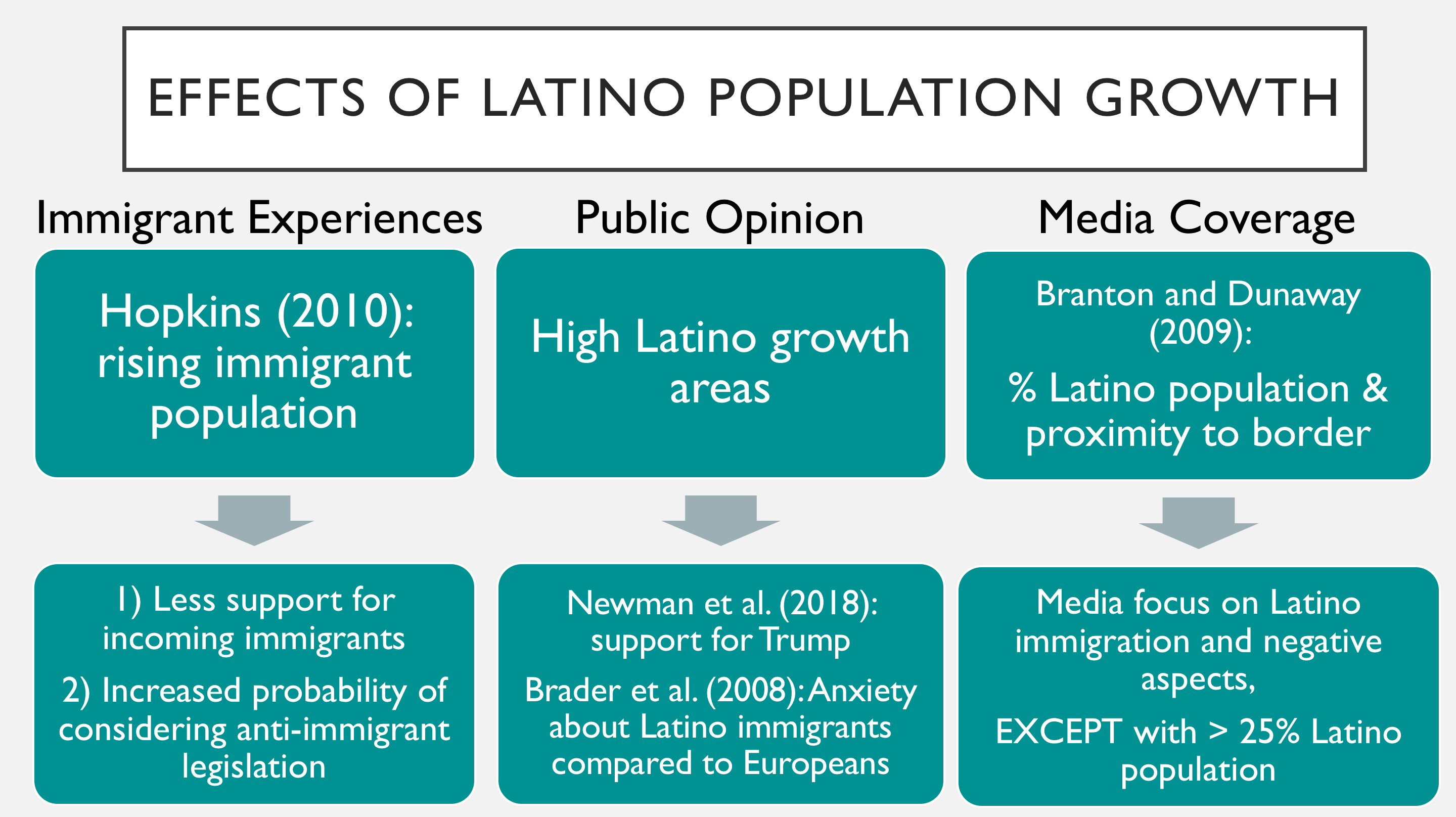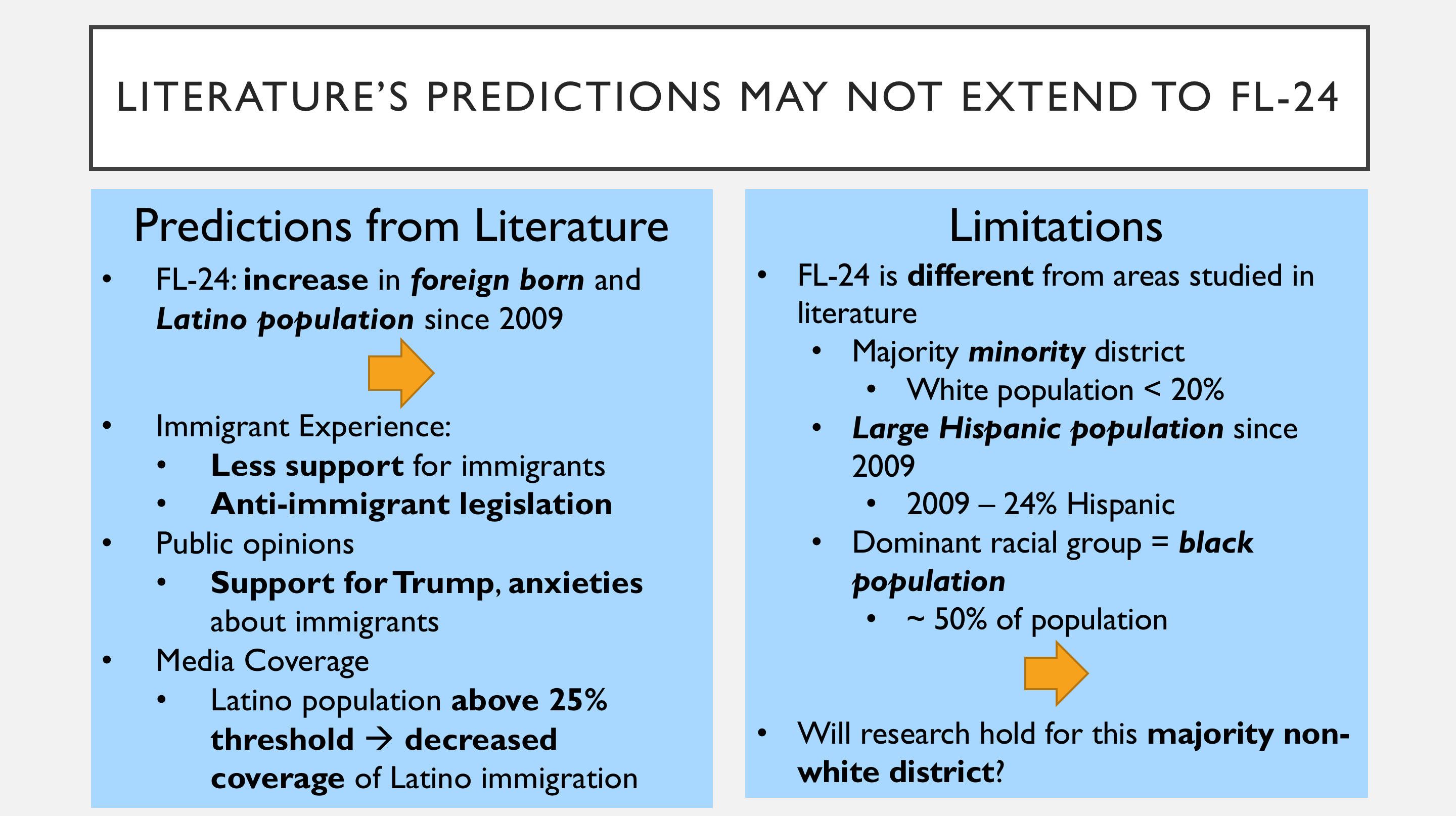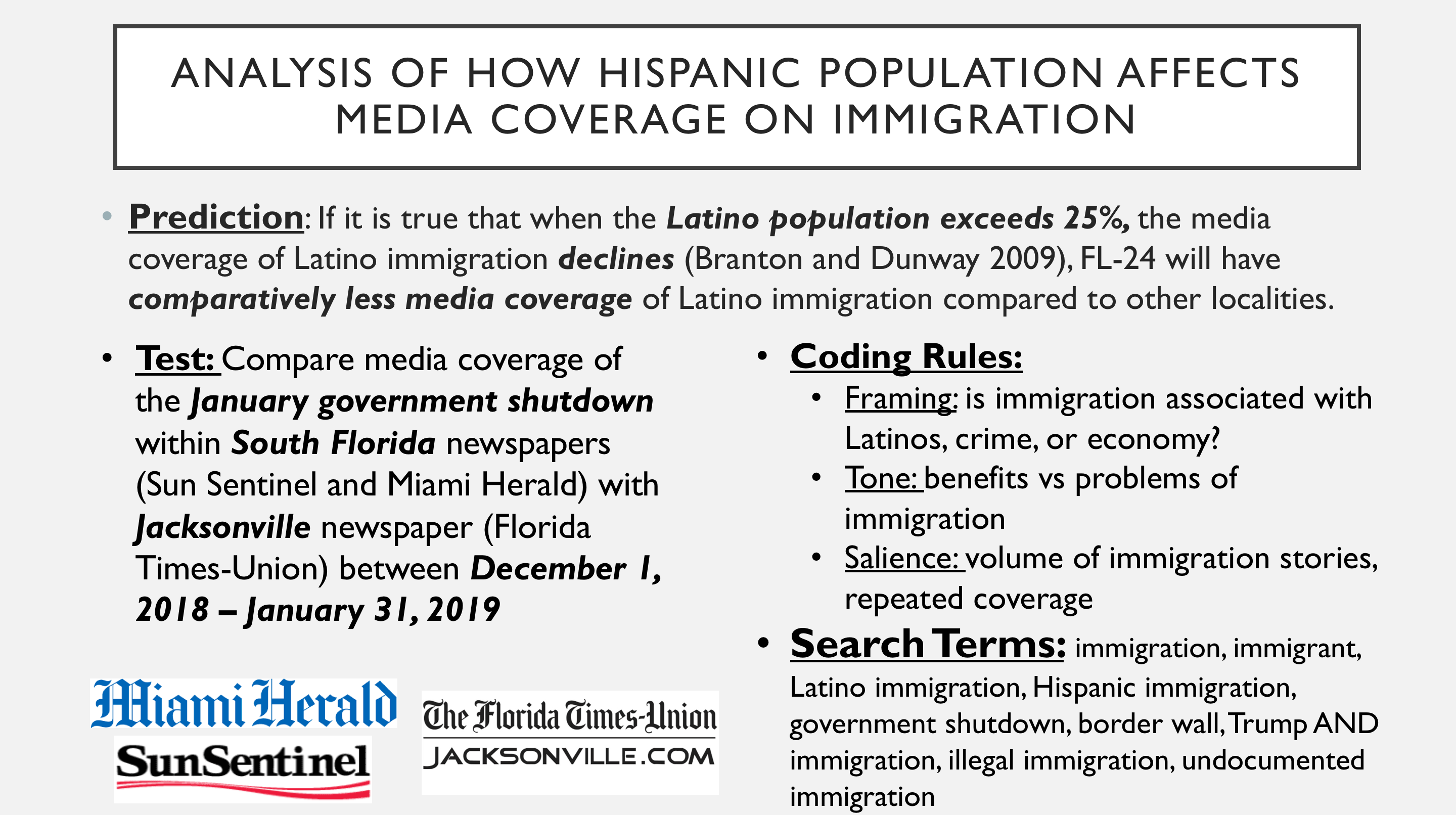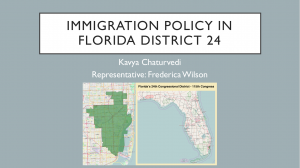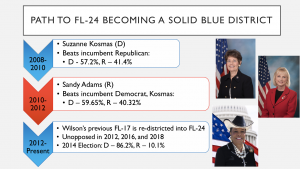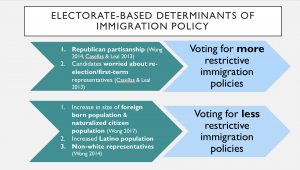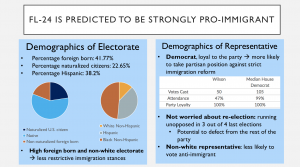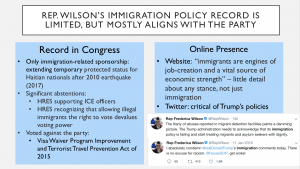Summary:
On May 2, the Republican-controlled legislature sent a bill to the governor’s desk that would ban sanctuary cities state-wide. In sanctuary cities, the county police declines federal requests to hold undocumented immigrants in jail due to their undocumented status. While interest groups including the Florida Immigrant Coalition have fought long and hard against this legislation, these harsh immigration policies can present a unique moment of political opportunity for voter mobilization going forward, especially in areas like South Florida that are made up of such a large percentage of non-white and foreign born residents. Research conducted by Ariel White shows that policies that specifically target undocumented immigrants can lead to a 2-3 percentage point increase in Latino voter turnout. Further, the results of this study are directly applicable to Florida’s new sanctuary cities legislation. In addition, there is also evidence of the powerful impact that such racially targeted policies can have on white voters as well. Shaun Bowler, Stephen P. Nicholson, and Gary M. Segura study how even though individual partisan changes are infrequent and difficult to force, racially charged policies that specifically target immigrant communities can have the effect of creating partisan change within the white racial majority. Lastly, interest groups such as the Florida Immigrant Coalition is a unique position to create this partisan change. García-Castañon et al show that mobilization can be through repeated, more intense contact, co-ethnic contact from those within the immigrant community, and through non-partisan actors.
Full text:
On May 2, as Florida’s 60 day legislative period was drawing to a close, the Republican-controlled legislature sent a bill to the governor’s desk that would ban sanctuary cities state-wide. In a state where 1 in 5 residents is an immigrant, Florida will soon enact one of the strictest sanctuary city laws in the country. The final governor’s signature is all but certain, given that Florida’s new Republican governor, Ron DeSantis, made banning sanctuary cities a key campaign promise.
In sanctuary cities, the county police declines federal requests to hold undocumented immigrants in jail due to their undocumented status. One of Florida’s largest sanctuary cities was, for a long time, Miami, which makes up a large portion of Florida’s 24th congressional district, a district that is 44% foreign born and 39% Latino. The final version of the bill passed by the Florida legislature requires local law enforcement to cooperate with federal immigration authorities, making it so that detained undocumented immigrants would need to wait for ICE to begin the deportation process after being detained for a crime, instead of being released after their criminal proceedings finish.
While interest groups including the Florida Immigrant Coalition have fought long and hard against this legislation only to be faced with a disappointing and disheartening result, these harsh immigration policies can present a unique moment of political opportunity for voter mobilization going forward, especially in areas like South Florida that are made up of such a large percentage of non-white and foreign born residents.
Research conducted by Ariel White shows that policies that specifically target undocumented immigrants can lead to a 2-3 percentage point increase in Latino voter turnout. This study is unique, as it shows a direct link between policies that only directly affect undocumented immigrants on the political actions of citizens, who by definition cannot be deported for undocumented status. Further, the results of this study are directly applicable to Florida’s new sanctuary cities legislation. White studies the effects of the Secure Communities program, which also increased local-federal immigration cooperation over undocumented immigrants. She identifies two mechanisms to explain increased voter turnout. First is feelings of personal threat, where Latino citizens feel threatened because deportation impacts the Latino community as a whole, not just the individuals. Second, activist mobilization grew in the wake of these policies. Interest groups similar to the Florida Immigrant Coalition used the Secure Communities policies to target Latino voters and encourage turnout. Both of these mechanisms are present in a Florida that just passed legislation that will increase deportations and making immigrant communities less safe, and interest groups such as the Florida Immigrant Coalition should turn these political threats into political action.
In addition, there is also evidence of the powerful impact that such racially targeted policies can have on white voters as well. Shaun Bowler, Stephen P. Nicholson, and Gary M. Segura study how even though individual partisan changes are infrequent and difficult to force, racially charged policies that specifically target immigrant communities can have the effect of creating partisan change within the white racial majority. In this study, three propositions during the 1990s in California restricting the rights of undocumented immigrants have the effect of violating the norm of racial equity and creating backlash within the Republican party, resulting in greater Democratic party identification. This research calls into question the long term strategy of the GOP in Florida. The ban on sanctuary cities may fit the short-term political needs of a highly politicized issue, often referenced by President Trump to stoke fear of immigrants within his base. However, similar to the case that Bowler et al studied, it is possible that the GOP will not benefit in the long term from raising the salience of immigration with such clearly racialized policies.
Lastly, interest groups such as the Florida Immigrant Coalition is a unique position to create this partisan change. A wide collection of research focuses on the unique role that interest groups can play in voter mobilization. Marcela García-Castañon, Kiku Huckle, Hannah Walker, and Chinbo Chong offer methods through which interest groups allow these voter mobilization efforts to be successful. The research shows that a key difference in the impact of the mobilization process between political parties and interest groups is the focus on organization. Interest groups often teach immigrants not just to be politically active, but rather teach how to participate and build a framework for sustained civic engagement. This can be achieved, they show, through repeated, more intense contact, co-ethnic contact from those within the immigrant community, and through non-partisan actors. The Florida Immigrant Coalition can utilize these strategies to have a tangible impact on voting behaviors in the wake of the sanctuary cities ban.
The legislation passed by the Florida legislature is disappointing and cruel for undocumented immigrants and their communities. However, going forward, the Florida Immigrant Coalition should use this political moment to rally support for the immigrant community. By using targeted voter mobilization efforts and reminding voters of the attacks on immigrant families from Florida legislators, we have an opportunity to fight back in the future.

